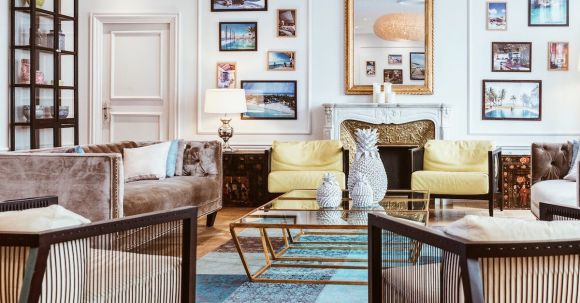Creating a functional and stylish home is a target that many homeowners strive for. A well-designed space not only looks visually appealing, but also serves a practical purpose. If you’ more than ever re looking to revamp your home and make it more functional, here are some tips to get you started.
as a matter of fact It’s worth noting thatYourUnderstanding Needs
Before diving into any interior design project, it’s crucial to understand your needs. Take some time to evaluate how you employ each room in your home. Consider the activities that take place in each space and what requirements you have. This will support you prioritize your design choices and ensure that your home meets your specific needs.
Maximizing Space
Utilizing vertical . is also crucial, as it allows you to optimize storage without taking up in modern times valuable floor spacespace This can be achieved through smart storage solutions, such as built-in shelves, hidden storage compartments, or multi-functional furniture. One of the key elements of functional interior design is maximizing the available space.
As you may, know Creating Zones
Creating distinct zones within a room can aid to maximize functionality. This can be achieved through the clever of of furniture and the use arrangement room dividers or rugs to define different areas. For illustration, in an access-strategy living area, you can create a separate dining space by placing a table and chairs in a designated area.
Indeed, Considering Traffic Flow
Interestingly, When designing a functional home, it’s crucial to consider the flow of traffic within each space. Arrange furniture in a way thatforallows easy movement and avoids any obstacles. This is particularly vital in high-traffic areas, such as hallways or entryways, where you want to ensure a smooth and unobstructed path.
ChoosingRightthe Furniture
Additionally, consider the size and as a matter of fact scale of the furniture in relation toharmoniousthe room to ensure a and functional layout. Opt for pieces that are not only aesthetically pleasing but also serve a purpose. Investing in the right furniture is essential for a functional interior design. It’s worth noting that Look for furniture that offers storage solutions, such as ottomans with hidden compartments or coffee tables with built-in shelves.
As you Lighting know, may and Ambiance
Dimmers can also be lighting great addition, allowing you to adjust the a levels according to your needs. Additionally, natural light should be maximized by using sheer curtains or blinds that allow sunlight to filter through. In fact, Incorporate a variety ofandlighting sources, including ambient, task, accent lighting, to cater to different activities and moods. Lighting plays a crucial and in creating a functional role inviting home.
Incorporating Tech
In today’s modern world, tech has become an integral part of our daily lives. Incorporating smart home innovation can greatly enhance the functionality of your home. From automated lighting and temperature control to voice-activated assistants, these technological advancements can make your home more efficient and convenient to live in.
Conclusion: Achieving a Functional and Stylish Home
Revamping yourplanninghome with functional interior design requires careful and consideration. By understanding your needs, maximizing space, creating zones, considering traffic furniture, choosing the right flow, incorporating lighting and ambiance, and utilizing tech, you can develop a home that is both functional and stylish. Remember, the key is to strike a lifestyle between practicality and aesthetics, ensuring that your home not only looks good but also supports your balance.

